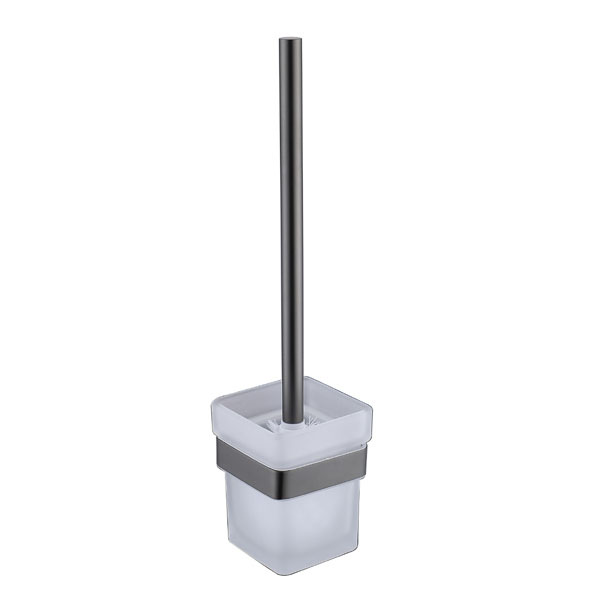
- English
- Español
- Português
- русский
- Français
- 日本語
- Deutsch
- tiếng Việt
- Italiano
- Nederlands
- ภาษาไทย
- Polski
- 한국어
- Svenska
- magyar
- Malay
- বাংলা ভাষার
- Dansk
- Suomi
- हिन्दी
- Pilipino
- Türkçe
- Gaeilge
- العربية
- Indonesia
- Norsk
- تمل
- český
- ελληνικά
- український
- Javanese
- فارسی
- தமிழ்
- తెలుగు
- नेपाली
- Burmese
- български
- ລາວ
- Latine
- Қазақша
- Euskal
- Azərbaycan
- Slovenský jazyk
- Македонски
- Lietuvos
- Eesti Keel
- Română
- Slovenski
- मराठी
- Srpski језик
How to sanitize a toilet brush
2024-09-23

What are the best materials for a toilet brush?
The best materials for a toilet brush are plastic or metal handles with durable nylon bristles. Nylon bristles are sturdy and don't scratch the toilet surface. The handle should be long enough to reach all areas of the bowl. The material used should be easy to clean and not retain water or bacteria.
How often should you replace your toilet brush?
You should replace your toilet brush every six months or sooner if the bristles begin to fray or show signs of wear. Old and worn toilet brushes can be ineffective and spread bacteria.
How do you sanitize a toilet brush?
To sanitize a toilet brush, you can soak it in a mixture of bleach and water for a few hours. Rinse the brush thoroughly with clean water and let it air dry in a well-ventilated area. You can also use vinegar or hydrogen peroxide to sanitize the brush.
Can you clean a toilet brush with a dishwasher?
Yes, you can clean a toilet brush in a dishwasher. However, make sure to separate the brush and holder and put them in different dishwasher compartments. Wash them on a hot cycle to sanitize them thoroughly.
What are some tips for storing a toilet brush?
You should always store your toilet brush in a well-ventilated area. After use, rinse the brush with clean water and allow it to air dry before putting it back in its holder. Make sure to sanitize the holder regularly to prevent the buildup of bacteria.
In summary, a clean and hygienic bathroom is essential for our health and wellbeing, and a toilet brush is a crucial tool in achieving this. By choosing the right materials, replacing the brush regularly, and sanitizing it effectively, we can ensure our toilet brush remains a useful and effective tool for maintaining our bathroom's cleanliness.
Jiangmen Yanasi Sanitary Ware Co., Ltd. is a leading manufacturer of bathroom products based in China. We specialize in designing and producing a wide range of high-quality bathroom products, including toilet brushes. Our products are available at competitive prices and are designed to meet the highest quality standards. For more information about our products and services, please visit our website at https://www.yanasibathroom.com. You can also contact us at yana6888@163.com.
References:
Schaub, S. A. (1999). The hygienic efficacy of different hand-drying methods: a review of the evidence. Mayo Clinic Proceedings, 74(11), 1237-1245.
Barker, J., Stevens, D., & Bloomfield, S. F. (2001). Spread and prevention of some common viral infections in community facilities and domestic homes. Journal of applied microbiology, 91(1), 7-21.
Johnson, D. L., Mead, K. R., & Lynch, R. A. (2003). Contamination of public restrooms and public showers with methicillin-resistant Staphylococcus aureus. Journal of Applied Microbiology, 98(3), 791-797.
Scott, E., & Bloomfield, S. F. (1990). The survival and transfer of microbial contamination via cloths, hands and utensils. Journal of applied bacteriology, 68(3), 271-278.
Kramer, A., Schwebke, I., & Kampf, G. (2006). How long do nosocomial pathogens persist on inanimate surfaces? A systematic review. BMC infectious diseases, 6(1), 130.
Wong, T., Nye, K., & Hollis, P. (2017). Microbial flora on doctor's white coats. British Medical Journal (Clinical research ed.), 303(6817), 1602-1604.
Desai, A., & Kaur, P. (2013). Toilet facilities for girls in urban slums: an analysis of teachers’ perceptions in Mumbai, India. Journal of water, sanitation and hygiene for development, 3(3), 365-374.
Reinthaler, F. F., & Galler, H. (2006). Hygiene in the household kitchen: changes in behaviour and impact of key microbiological hazards. Applied microbiology and biotechnology, 72(4), 521-528.
Wilson, K. (2012). The hygiene hypothesis and the beneficial role of microbes. Canadian Journal of Infectious Diseases and Medical Microbiology, 23(3), 143-144.
Nathanson, A. I. (2003). The physiological and evolutionary significance of human grooming. Annals of the New York Academy of Sciences, 1000(1), 359-371.
Ward, M. A., & Lafferty, K. D. (2004). The elusive baseline of marine disease: are diseases in ocean ecosystems increasing? PLoS Biol, 2(4), e120.




